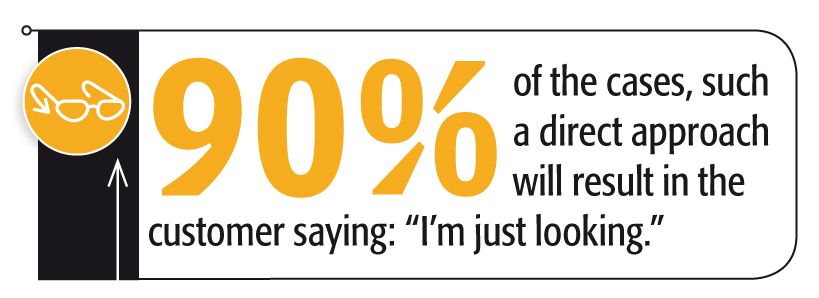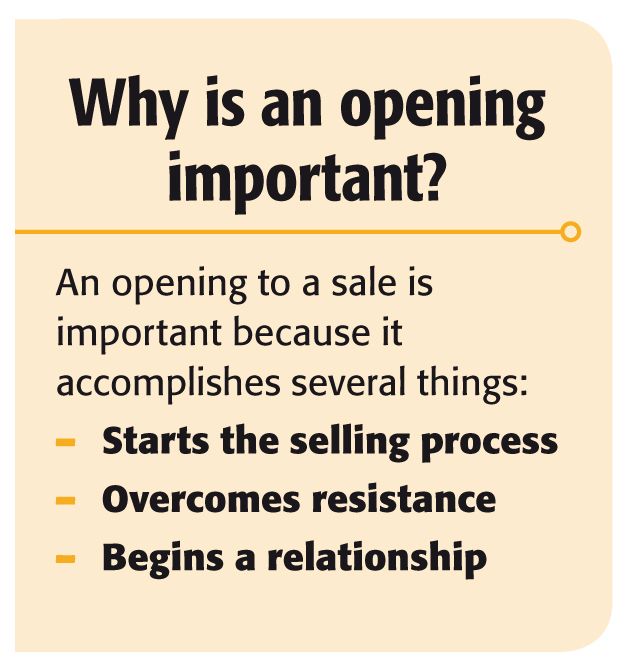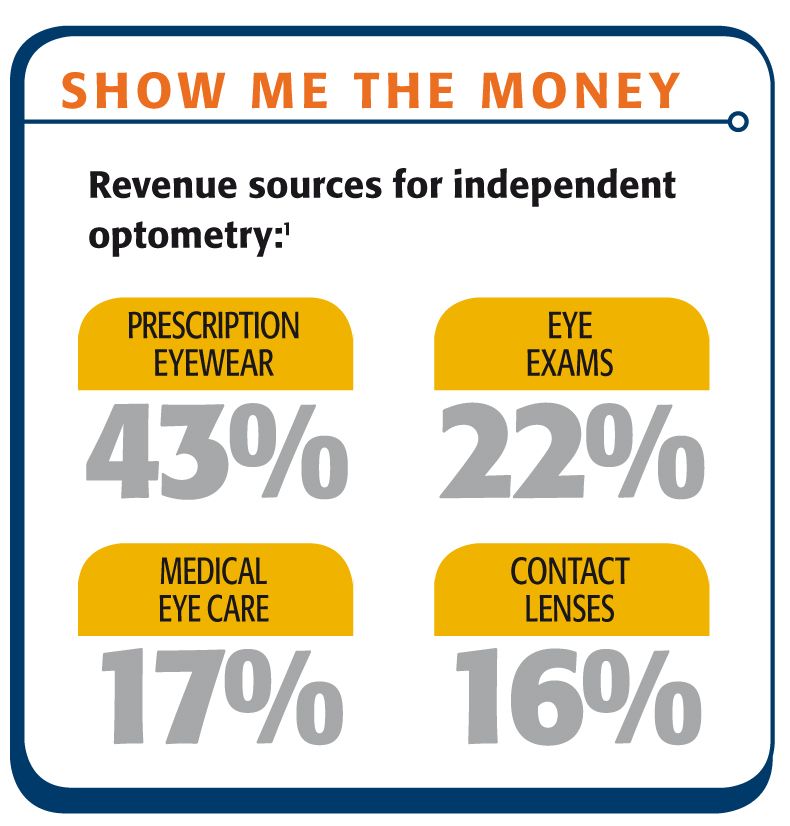How to open the optical sale
Those opticians who have studied the retail-selling process know there are seven specific parts to a retail sales presentation. Each part or step is important for a different reason.

Those opticians who have studied the retail-selling process know there are seven specific parts to a retail sales presentation. Each part or step is important for a different reason.
If all the parts are accomplished and executed well, the likelihood a customer will purchase increases dramatically. The reverse is also true-leaving steps out or delivering some poorly decreases the likelihood of making a sale.
The important opening
The first step in the selling process is known as the opening, which is important because it accomplishes several things:
• Starts the selling process. If an optician cannot get a customer to speak with him, the selling process cannot begin-the sale ends before it starts. In this instance, the customer browses the dispensary without assistance. This allows the customer to make assumptions about the dispensary’s merchandise, prices, and level of service. Those assumptions, unfortunately, are often wrong. Regardless, many customers will leave without hearing the dispensary’s value propositions.
• Overcomes resistance. Every person I remember asking has been able to relate a story of a time when he had a bad experience with a salesperson. Common threads are salespeople who were “pushy;” who did not listen to the customer’s needs or wants; who tried to sell the customer something for which he did not need, want or ask; or who were rude, arrogant, or (worst of all) apathetic. The list goes on. When approaching a customer, a salesperson must be aware that because of prior bad experiences customers are distrustful of salespeople.
• Begins a relationship. I like to say that “People do business with people they know and like, not people they don’t know or don’t like.” Opening a sale is where that “getting to know you” relationship begins. The best sellers I know have learned that the first thing they say to a customer can be the difference between making and losing a sale.
Opening seems like it would be a pretty straightforward thing to do. Simply walk up to the customer, smile, greet her and ask: “How may I help you?” Unfortunately, in 90% of the cases, such a direct approach will result in the customer saying: “I’m just looking.”
The obvious question is: If you know a customer is likely to respond with “I’m just looking,” why would you ask that or a similar question? For this reason, whatever opening technique the optician uses must be capable of winning the customer’s trust, at least initially, enough to continue the selling process.
All of the sales trainers I know advise against the “How-may-I-help-you?” approach, pretty much for the reason stated above. Instead they suggest some different ways of accomplishing this task. Let’s look at why.


Approaching the customer
Imagine you are invited to a party and are introduced to a celebrity whom you have always wanted to meet (a recording artist or actor, for example). Your dream is to get an autograph and perhaps a photo with this person. You know that the celebrity’s time is precious, but that if she finds the interaction interesting your time together could go longer, giving you more time to get acquainted.
What is the first thing you would say? “May I have your autograph?” “Would you take a picture with me?” I doubt it.
You would probably tell the celebrity how much you admire her work and ask some questions about her life and work. I suspect you would pay close attention to every word the celebrity says and carefully watch her body language to see if the questions you ask are being received well or not.

Getting comfortable
Eventually, when you feel comfortable that it will not be an inconvenience or offensive, you would ask the celebrity for an autograph and to pose for a picture.
Similarly, the most successful salespeople I know say that approaching a customer with non-business related questions is the best way to deflect resistance and get the customer into an attitude where he or she will be willing to open up. For example, if you travel, you know that people who work in hotel shops are trained to ask customers where they are from. Regardless of where the customer is from, the salesperson will follow up with questions or comments about that place. Based on how the customer replies, the salesperson may take the conversation in other directions, but all of them will be non-business related. Only after a minute or two of such conversation will the salesperson ask what the customer is shopping for.
The concept to keep in mind is that a customer is more likely to continue with a transaction when he or she has begun to feel comfortable with a salesperson. One could say the customer is beginning to develop trust. A salesperson who presents as interested, interesting, customer centric, and caring is more likely to be trusted than someone who pounces on customers as soon as one enters the dispensary.
This type of opening is not an easy thing to learn. It requires sensitivity, empathy, a caring attitude, respect, and a willingness to serve. The more open-hearted a salesperson, the more he or she will be successful at gaining the customer’s initial trust and moving on to the next step in the selling process. The result will be an increased closing rate and improved sales.ODT
Newsletter
Want more insights like this? Subscribe to Optometry Times and get clinical pearls and practice tips delivered straight to your inbox.